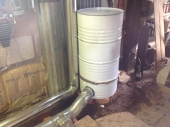paul wheaton wrote:
Conifers are allelopathic - they sorta poison the competition.
Actually, it is incorrect to say that conifers are allelopathic. Repeat: conifers are NOT allelopathic. Allelopathy describes the secretion of chemical substances that prevent or stunt the growth of other plants (e.g. black walnut secretes juglone). Conifers do not secrete any "poisons".
The reasons some plants grow less well or not at all under conifers is not because of chemical warfare on the part of the tree. It is, to the best of my knowledge, because they are very heavy feeders that monopolize nutrients to grow fast (the video shows how fast they grow compared to oaks), suck up most of the water and create drought conditions in the upper layers of soil (in the summer months at least), and because their dense, superficial root system prevents other plants from establishing themselves.
There are those who say that conifers acidify the soil. I have yet to see scientific evidence of this. I used to believe this because everyone seemed to say it was so, but then when I tried to find out more about it, I was confronted with a total absence of evidence. If anyone can find reliable scientific literature demonstrating an acidification of the soil under conifers, either because of the needles or some root secretion, I'd be glad to know! Until then I'll stay skeptical of the whole conifer=acid thing.





